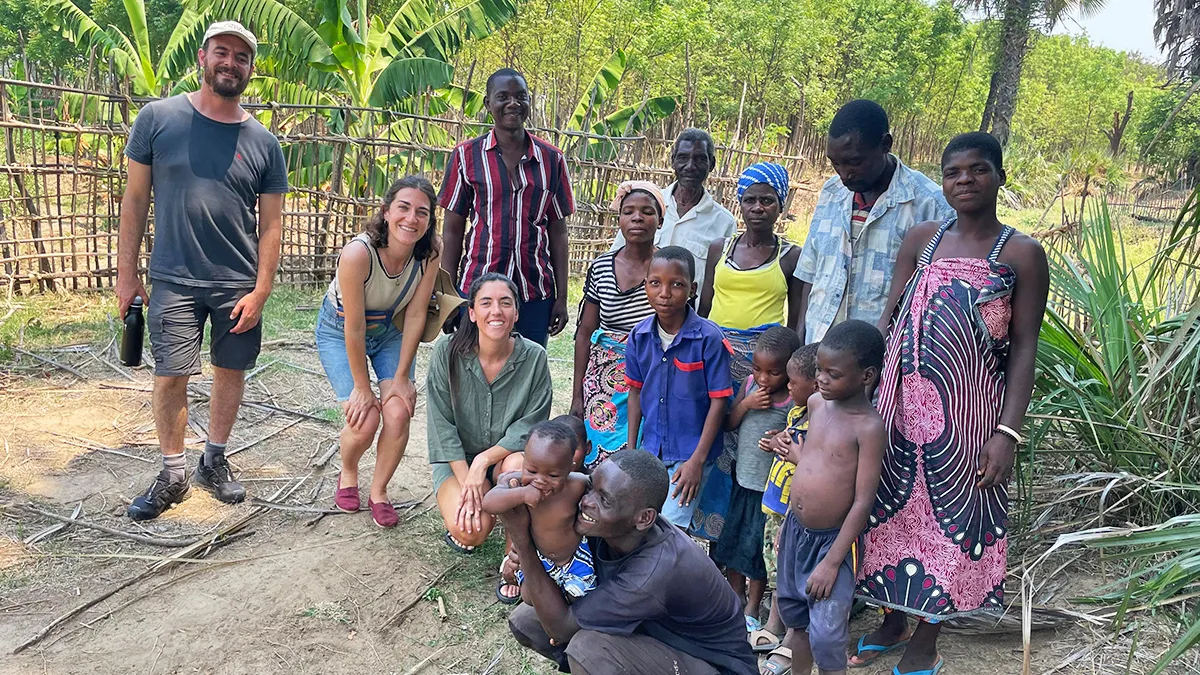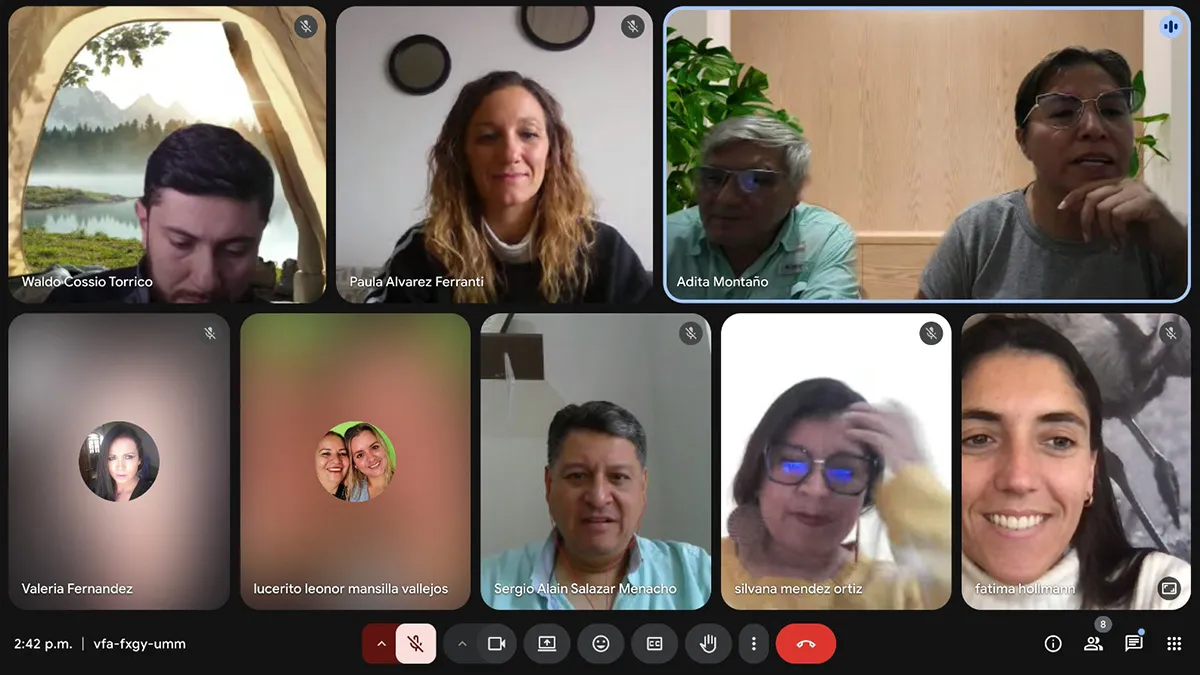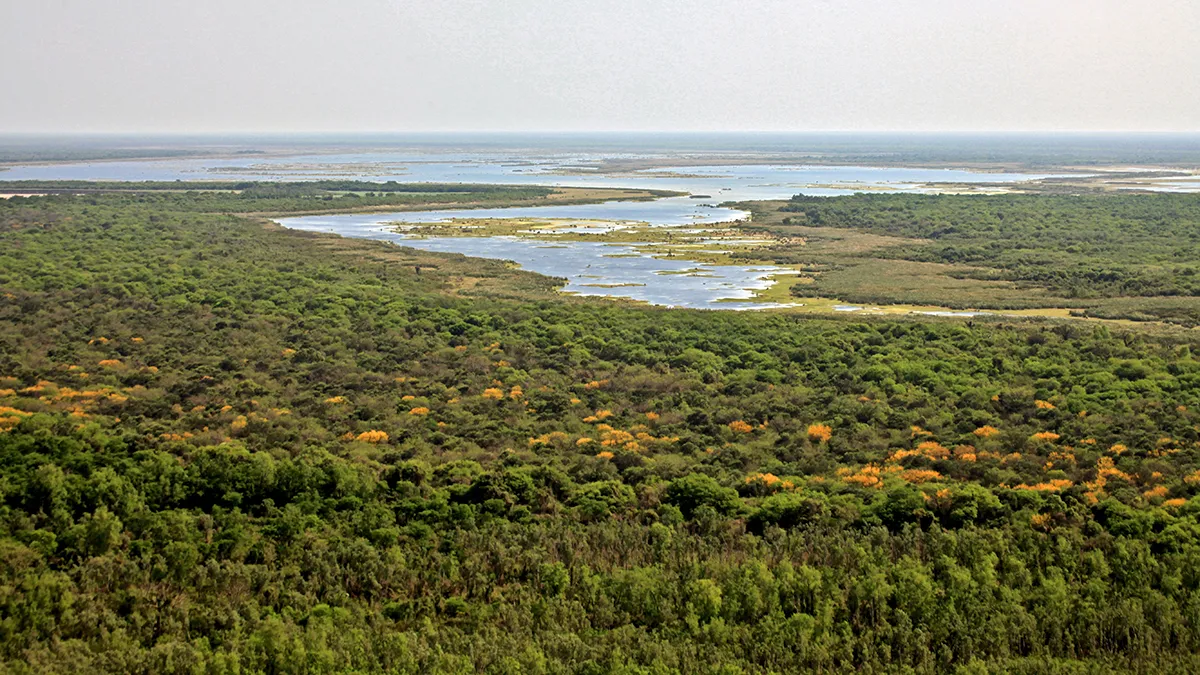A Story of Cross-Pollination Across Continents and Conservation Organizations
A Story of Cross-Pollination Across Continents and Conservation Organizations
How Fatima's attendance to the first Effective Conservation course sparked shared practical learning between five conservation organizations based in five countries.
What began as a single course in Effective Conservation sparked a ripple of collaboration across six countries and conservation organizations. This is the story of how Fatima Hollmann, a community coordinator from Rewilding Argentina, transformed a learning opportunity in Zimbabwe into a lasting network of shared knowledge, adapted methodologies, and mutual inspiration—from the forests of South America to the reserves of Africa. Discover how one participant’s curiosity helped bridge continents and catalyze real-world impact in conservation.
Estimated time to read: 10 minutes
Countries involved: Zimbabwe, Malawi, South Africa, Argentina, Brazil, and Bolivia
Organizations involved: Fundación Rewilding Argentina, Conserve Global, African Parks, SPVS-Society for Wildlife Research and Environmental Education, NATIVA

Fatima (far right) with fellow conservationists in the 2023 Effective Conservation course in Gonarezhou National Park.
African inspiration
Fatima Hollmann studied business administration in Buenos Aires, Argentina, before joining Fundación Rewilding Argentina or FRA, where she worked as a community coordinator in Impenetrable National Park in the Chaco ecoregion, home to South America’s largest tropical dry forest. She attended our first course, the onsite phase of which took place in Gonarezhou National Park in Zimbabwe in 2023.
During the course, she was particularly interested in our long talk with Simon Naylor. He had managed Phinda Reserve for more than two decades and had just started his new position as Operations Manager for Conserve Global. Intrigued by the socioeconomic surveys Conserve carries out, Fatima asked Simon about them. Simon promised to put her in contact with Harriet Davies-Mostert, the Director of Impact at the African NGO.
Right after the course, Fatima and her colleagues from FRA took the opportunity to visit Majete Wildlife Reserve, the first protected area of African Parks or AP. While there, she asked about how they measured socioeconomic changes in their communities, and they put her in contact with Dave Verkaik, AP’s IT officer. Fatima probably didn’t know it then, but her curiosity would lead her on a journey connecting several organizations across Africa and South America, achieving one of the Effective Conservation Training Initiative’s (ECTI) main goals.
Fatima recounts how Harriett quickly agreed to speak with her. Fatima’s main curiosity was to learn how African NGOs operate in environments “with populations of 600,000 people living in buffer zones when the Impenetrable has only 600 families and is still quite complex”. What seemed like a one-way transfer of knowledge from Harriett to Fatima turned into a richer conversation where Harriett showed clear interest in how FRA worked in the Argentine Chaco region.
Fatima highlights that the exchange with the AP Parks staff was equally frank and productive. Dave showed Fatima the dashboards of the georeferenced databases that AP uses, combining ArcGIS and Survey 123 programs. Initially, Fatima did not see the need to associate the data with a GIS, but she now appreciates the spatial component, which allows her to understand what is happening in the territory much more clearly.

Fatima visiting local communities in Malawi with colleagues from Argentina.
Applying what was learnt and sharing with Brazil
Thanks to conversations with sister organizations on the other side of the Atlantic, Fatima gained a better understanding of the type of socioeconomic study she wanted for her park in northern Argentina. This allowed her to work with greater confidence with the company hired for the project. In Fatima’s words: “It was a process of adapting what we learned from other organizations rather than replicating their way of working.” This process of exchanging ideas and adapting methodologies resulted in the report “Promoting a new restorative economy in El Impenetrable”, which Fatima led with an external company in 2025. But the story does not end there.
After the report was published, Fatima shared it with her colleagues at ECTI. Ricardo Borges, who works for the Brazilian NGO SPVS (Society for Wildlife Research and Environmental Education), read the report and became interested in many of the approaches and results presented there, immediately recognizing correlations with SPVS’s work on nature conservation in the Atlantic Forest and with local communities. He already knew Fatima from an institutional visit by the Argentine organization to the Brazilian foundation before the course. Their relationship strengthened when they were together in Gonarezhou.
Ricardo messaged Fátima to ask whether she could give a more detailed presentation on the work carried out in El Impenetrable by FRA—and she agreed. In Ricardo’s words: “This exchange of ideas was key to refining some of the proposals and plans we were developing for our territory. Even though these are regions with many differences, there is still a wealth of practices, strategies, and methodologies that we can adapt to different contexts. In this way, ongoing exchanges between professionals and institutions have been essential for our organization in its efforts to conserve nature and promote a restorative economy.”

Online meeting on socioeconomic surveys between Rewilding Argentina and NATIVA team from Bolivia.
South American course and exchange with Bolivia
There was still one more leap to be made. This July, the first ECTI course for conservationists in South America was held in Spanish. For that course, Ignacio Jiménez, the coordinator of ECTI and of the course, invited Fatima to present her work with local communities in El Impenetrable and to share the results of her participation in the training program.
Fatima comments on how much she enjoyed sharing her experience with colleagues from South America and reviewing some of the concepts from the course for a couple of days. During the course, she met the team from the Bolivian NGO NATIVA. Shortly after the course ended, Fatima received a message from Adita, a member of this organization, asking if she could share her experience measuring social indicators with the NATIVA team.
At that meeting, Fatima and Paula—from the consulting firm that participated in the study—spoke with most of the NATIVA staff, who shared the context of their work in the Ñembi Guasu Conservation and Ecological Importance Area. In Adita’s words: “Learning how Rewilding Argentina implemented the third pillar of sustainable development in places like Iberá and El Impenetrable was very valuable, especially regarding the economic benefits that conserving these territories generates for communities. Although we at NATIVA have already begun some basic exercises, this guidance will help us improve them significantly in terms of methodology and approach. The experience has been extremely positive. We are very grateful to Fatima and her team for their openness, generosity, and valuable support. We remain in contact and are enthusiastic about continuing to strengthen our collaborative relationship”.
The story illustrates how a rich learning process and inter-institutional twinning can be fostered by participating in a training process together with organizations from other countries and continents, including countries such as Argentina, Malawi, South Africa, Brazil, and Bolivia. Who knows if this cross-pollination process has concluded or if it will continue to connect more countries and organizations?
As a side note, largely due to Simon Naylor’s participation in our Gonarezhou course, a Conserve Global representative working in Mozambique is participating in our global leadership course in Serengeti National Park this year for the first time.
Text prepared by Ignacio Jiménez with the support of Fatima, Adita, and Ricardo.
Photos: Fatima Hollmann and Rafa Abuin

Impenetrable National Park
